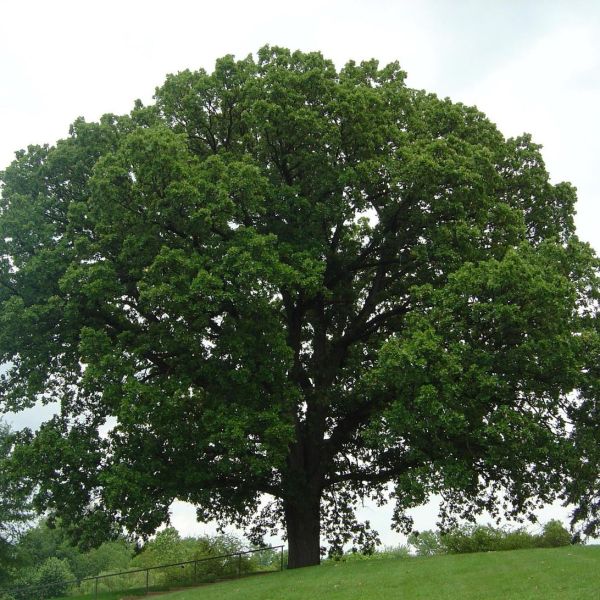
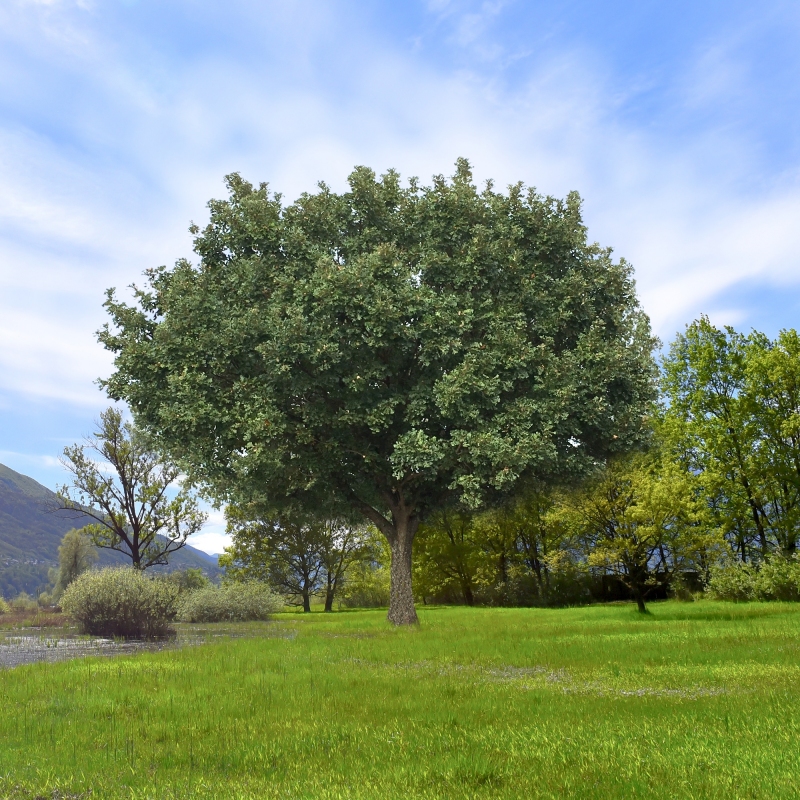
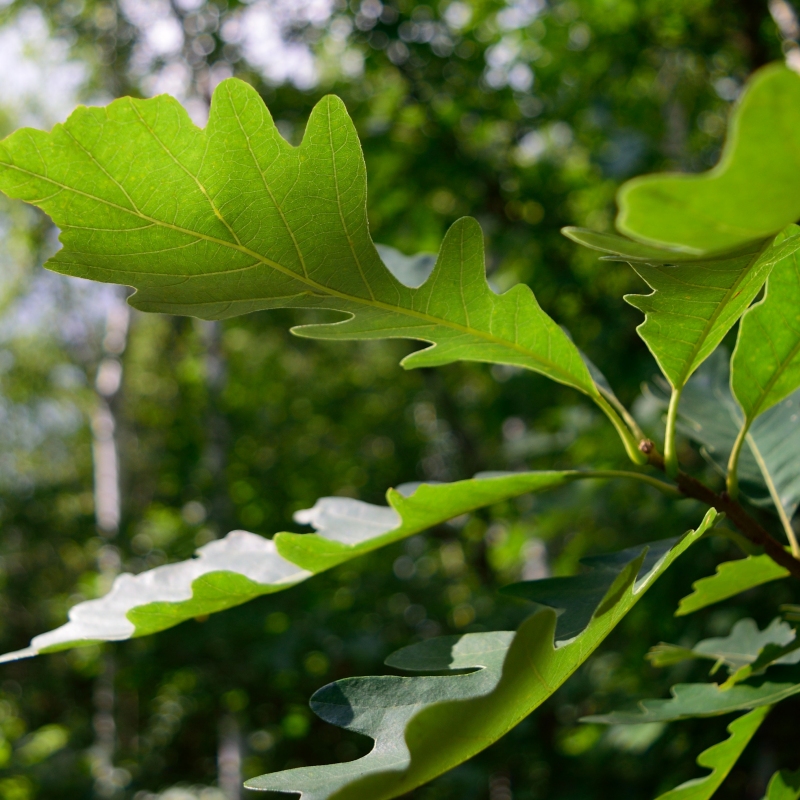
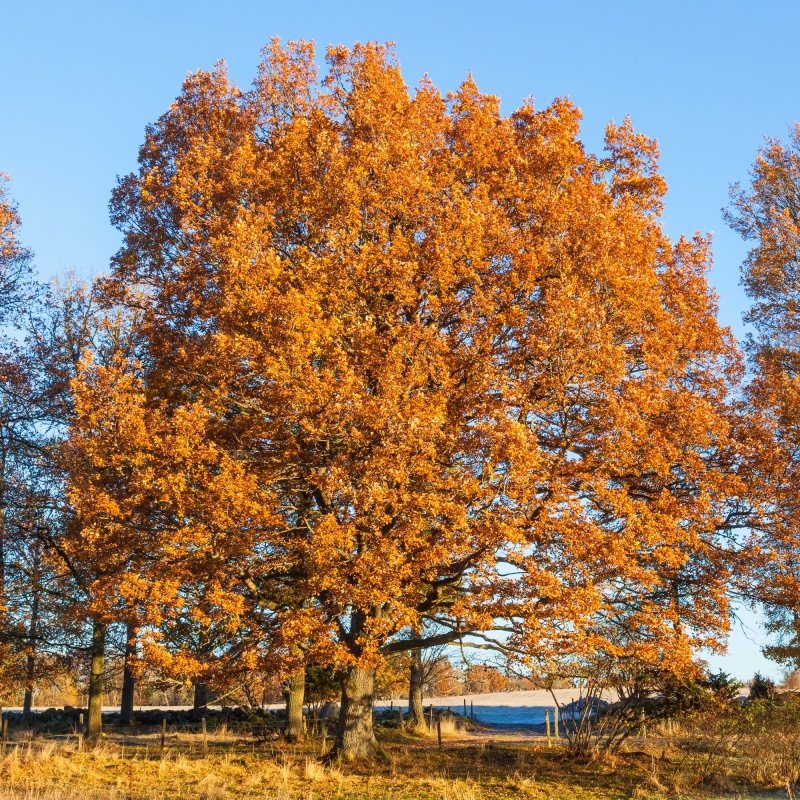
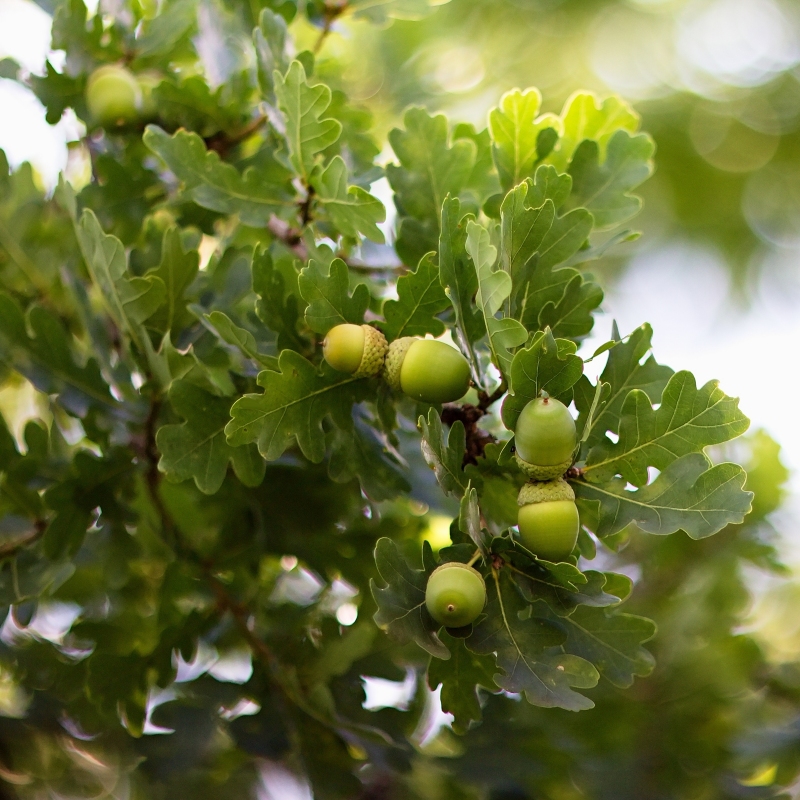
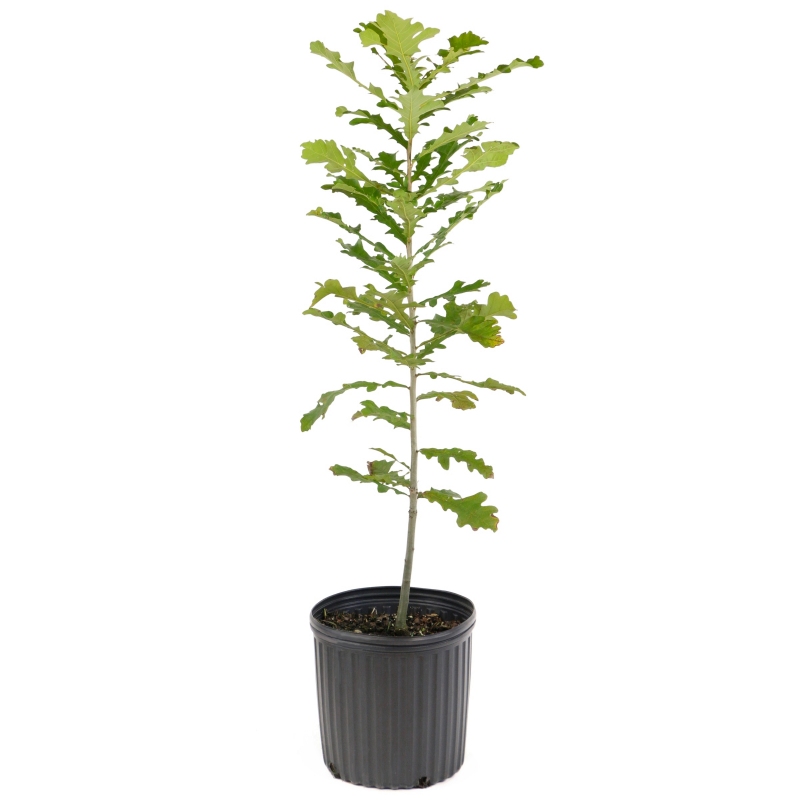
Bur Oak Tree
Quercus macrocarpa Bur Oak
77 reviews
Bur Oak Tree
Quercus macrocarpa Bur Oak
77 reviews
- Tolerant of various soil types, including clay and dry, compacted soils
- Provides ample shade with its wide canopy, making it ideal for landscaping or pasture areas
- Produces acorns that are a food source for wildlife, attracting birds and small mammals to your yard
- Recommended by landscape designers for optimal fit in real yards
$112.00
$160.00
30% Off
- Ships to in 3-5 Days
- Free Shipping Over $150
- Plant Arrival Guarantee
- In Stock
- Free Plant Consult
$200 - Landscape-Approved: Every Plant We Sell Comes With Design Expertise Behind It
- Trade 3 Gallon
- 1 Gallon
We are sorry, product is currently out of stock due to seasonal availability. Please check the "Related plants available in your area" section below
Not just beautiful - intentionally selected by ShrubHub's 3D landscape design team to fit real-world spaces and maximize yard potential.
Why Bur Oak Tree?
The Bur Oak Tree, also known as Quercus macrocarpa, is a majestic and long-lived tree that can reach heights of up to 100 feet. Its distinctive acorns are the largest of any North American oak species, providing a valuable food source for wildlife. Bur Oak Trees are known for their resilience and adaptability to various soil and climate conditions, making them a popular choice for landscaping and reforestation projects.
Sunlight
Bur Oak trees prefer full sun to partial shade, meaning they thrive in areas with at least 6 hours of direct sunlight per day. They can also tolerate some shade, but may not grow as quickly or produce as much acorn production in these conditions.
Watering
The Bur Oak tree has a moderate watering requirement. It prefers moist, well-drained soil and should be watered regularly, especially during periods of drought. It is important to water deeply to encourage strong root growth and overall tree health.
Fertilizing
Bur oak trees benefit from a balanced fertilizer with equal parts of nitrogen, phosphorus, and potassium. It is recommended to use a slow-release fertilizer in early spring before new growth begins. Extra care should be taken to avoid fertilizing too heavi
Bur Oak Tree (Quercus macrocarpa Bur Oak)
The Bur Oak Tree, scientifically known as Quercus macrocarpa, is a large and long-lived tree commonly found in North America. It is also known as the Bur Oak, Mossycup Oak, or Mossycup White Oak. This tree is a member of the white oak group and can live up to 200-300 years.
Characteristics:
- Height: 70-100 feet
- Spread: 60-80 feet
- Shape: Rounded, spreading crown
- Leaves: Dark green, deeply lobed, with a shiny upper surface and paler underside
- Acorns: Large, about 1-2 inches long, with a fringed cap
Uses:
The Bur Oak Tree is often planted for shade in landscapes and parks. It is also a valuable tree for wildlife, as the acorns are a food source for various animals, including deer, squirrels, and birds. The wood of the Bur Oak is strong and durable, making it valuable for construction and furniture.
Growth Requirements:
- Soil: Well-drained, acidic to neutral soil
- Light: Full sun to partial shade
- Water: Moderate water needs
- Hardiness Zone: 3-8
Benefits:
The Bur Oak Tree provides ample shade, beautiful fall color, and attracts wildlife to your landscape. Its large size and spreading crown make it a majestic addition to any yard or garden.
Plant Information:
| Botanical Name: | Quercus macrocarpa Bur Oak |
| USDA Zones: | 3 - 8 |
| Mature Height: | 80 FT |







Pollination Info
Pollination Information for Bur Oak Tree (Quercus macrocarpa Bur Oak)
Bur Oak trees are monoecious, meaning they have separate male and female reproductive structures on the same tree. The male flowers, called catkins, produce pollen, while the female flowers contain the ovules where fertilization takes place.
Pollination Process:
Pollination in Bur Oak trees is typically carried out by wind. The male flowers release pollen into the air, which is then carried to the female flowers by wind currents. Although Bur Oak trees are self-fertile, meaning they can pollinate themselves, cross-pollination by wind between different trees can lead to healthier and more genetically diverse offspring.
Pollination Timing:
The pollination of Bur Oak trees usually occurs in the spring, around the same time that the new leaves begin to emerge. The exact timing can vary slightly depending on the climate and location of the tree.
Importance of Pollination:
Successful pollination is essential for Bur Oak trees to produce acorns, which are their reproductive structures. Acorns are a vital food source for many animals and birds and play a crucial role in the regeneration of the species.
By understanding the pollination process of Bur Oak trees, gardeners and landowners can ensure the health and vitality of these iconic native trees.
FAQ
Bur Oak Tree (Quercus macrocarpa)
FAQ
What is a Bur Oak Tree?
The Bur Oak Tree, scientifically known as Quercus macrocarpa, is a species of oak native to North America. It is commonly found in prairies, savannas, and woodlands.
How tall can a Bur Oak Tree grow?
Bur Oak Trees can grow up to 100 feet tall and have a crown spread of 80 feet. They are known for their large size and majestic appearance.
What are the characteristics of Bur Oak Tree leaves?
Bur Oak Tree leaves are large, ranging from 6 to 12 inches in length, with deep lobes and a glossy dark green color. They turn a beautiful golden-yellow in the fall.
Do Bur Oak Trees produce acorns?
Yes, Bur Oak Trees produce large acorns that are about 1-2 inches in length. These acorns are an important food source for wildlife such as squirrels and deer.
How do I care for a Bur Oak Tree?
Bur Oak Trees prefer well-drained soil and full sun exposure. They are drought-tolerant once established but benefit from regular watering during dry periods. Pruning is generally not necessary for Bur Oak Trees.
Are Bur Oak Trees susceptible to any diseases or pests?
Bur Oak Trees are relatively resistant to pests and diseases but can be affected by oak wilt, a fungal disease that can be fatal. Proper care, including avoiding pruning during the growing season and planting in well-drained soil, can help prevent diseases.
Planting & Care
Bur Oak Tree Planting & Care
Planting:
- Choose a sunny location with well-draining soil.
- Dig a hole twice the width of the root ball and just as deep.
- Place the tree in the hole, making sure the top of the root ball is level with the ground.
- Backfill the hole with soil, making sure to tamp it down to remove any air pockets.
- Water the tree thoroughly after planting.
Care:
- Water the tree regularly, especially during dry spells.
- Mulch around the base of the tree to retain moisture and suppress weeds.
- Prune any dead or damaged branches as needed.
- Fertilize the tree in the spring with a slow-release fertilizer.
- Protect the trunk from damage by keeping lawn equipment away.
Pests & Diseases:
Bur Oak trees are generally resistant to pests and diseases, but they can still be affected by oak wilt, powdery mildew, and gypsy moths. Regular inspection and proper care can help prevent these issues.
Check Out These Verified Customer Reviews:
Customer Reviews
4.7 out of 5 based on 77 reviews
Thank you! Your review has been submitted.
Thriving in my garden, looks stunning.
The Quercus Oak 'Bur' 3G exceeded my expectations. Thriving in my yard.
Shipment was fast and on time. Received the item sooner than expected.
Item has been added to your cart.


